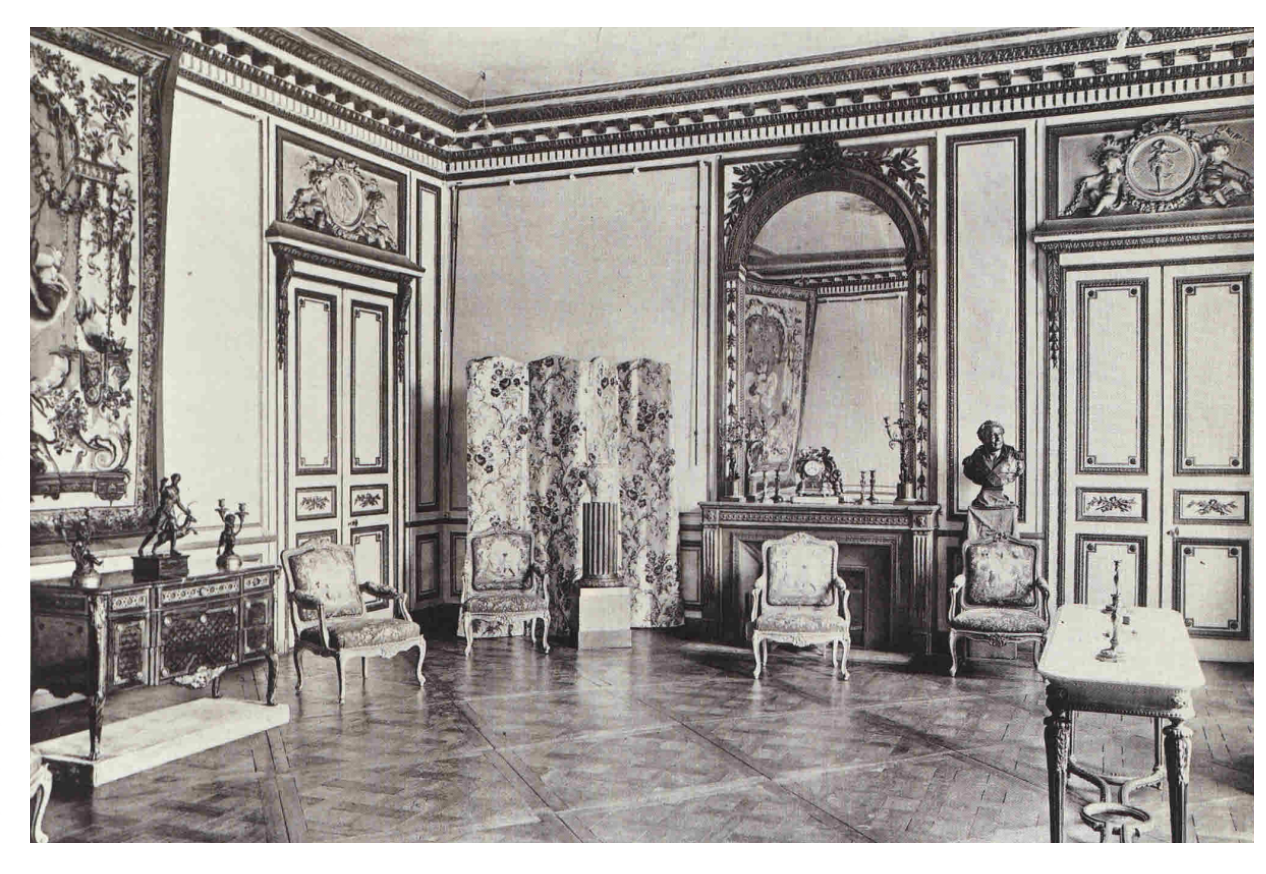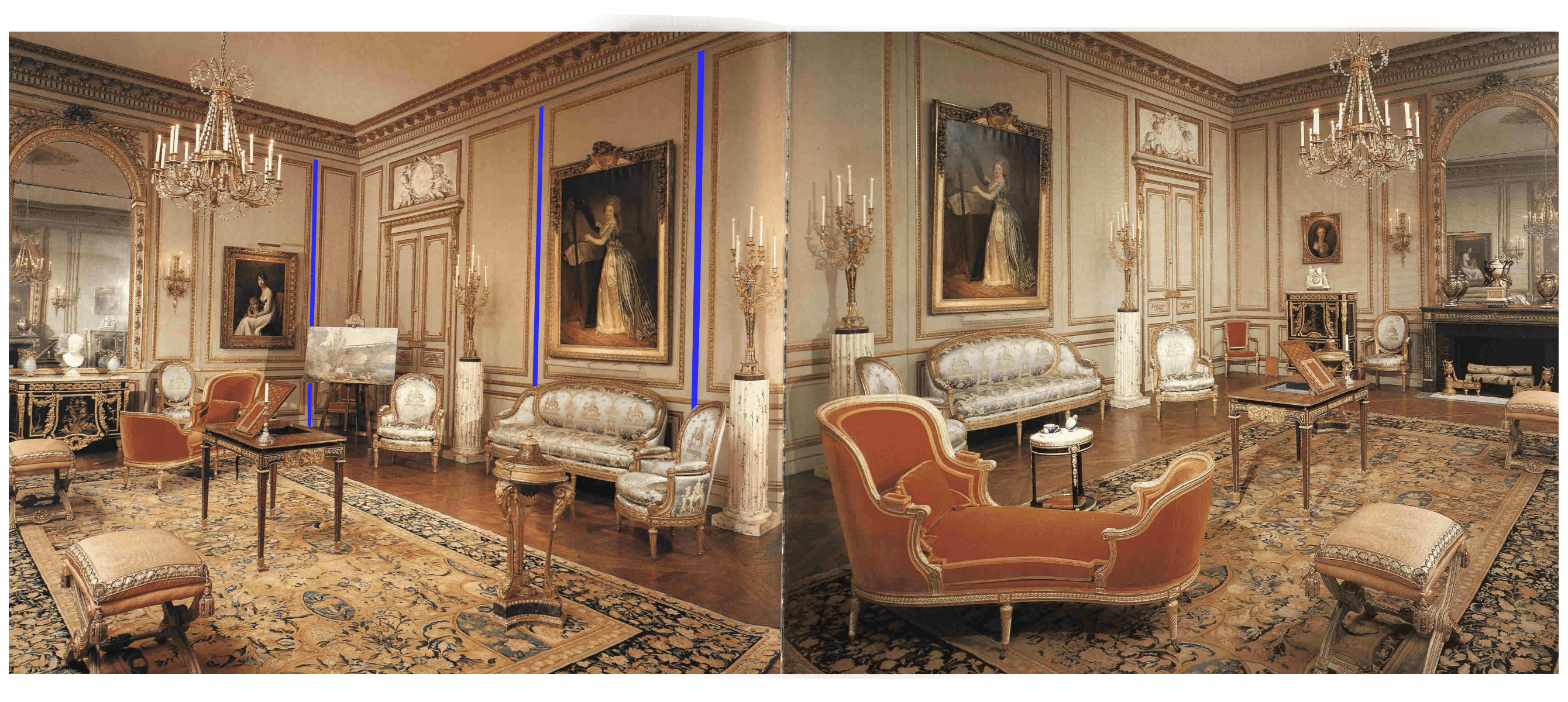PANELING
The Tessé Room was constructed between 1765 to 1769 at the behest of Marie-Charlotte de Béthune-Charost, comtesse de Tessé. Originally functioning as a receiving room, the Metropolitans Museum of Art’s Tessé Room has been redefined, allowing visitors a glimpse into the French Enlightenment.
The Tessé Room, designed by Nicolas Huyot, is renowned for its intricate paneling, which comes directly from the original building. The dimensions of the paneling are determined by the size and shape of the room and it is important to note that the paneling in the the Tessé Room has been altered to fit the scale at the Metropolitan Museum.

This photograph shows the panels in their original setting.
The design of domestic spaces like the Tessé Room was not fixed but rather changed over time, as elements such as the paneling and the furniture were updated. These variations directly reflected the aesthetic tastes and personality of their owner, as the rise of consumerism and the largess of the bourgeois made this transformation possible. The interior spaces, functioning as private studies or rooms for entertainment, facilitate our modern understanding of privacy and individuality.
Several small panels add a significant amount of square footage to the room.

Using photo editing techniques, some of these additional panels have been highlighted in blue, to reveal the discrepancy between the room as it was and as it is today.

